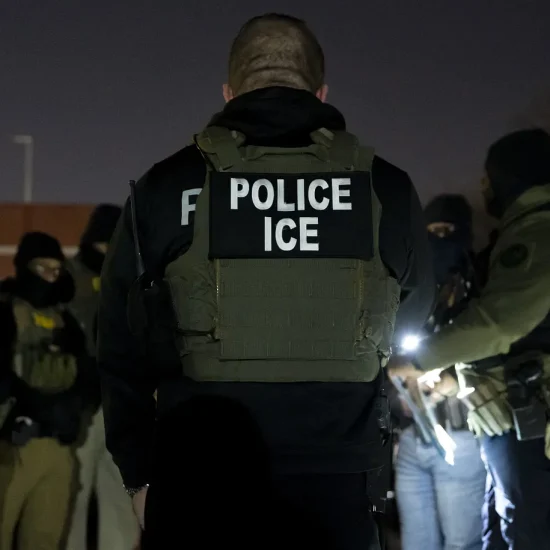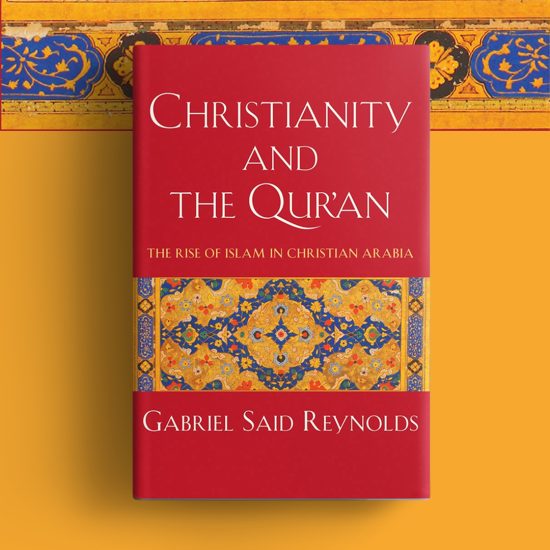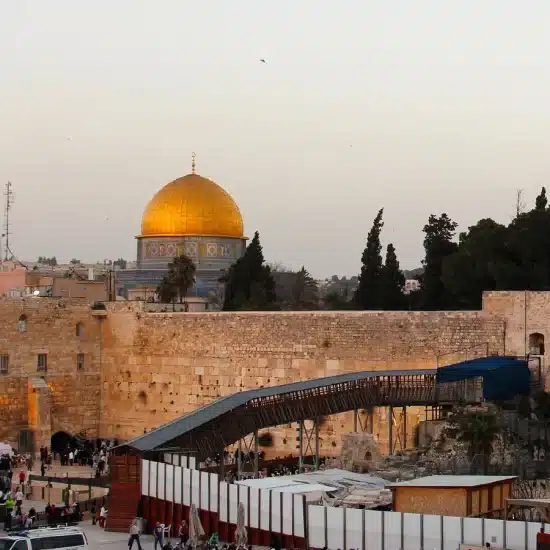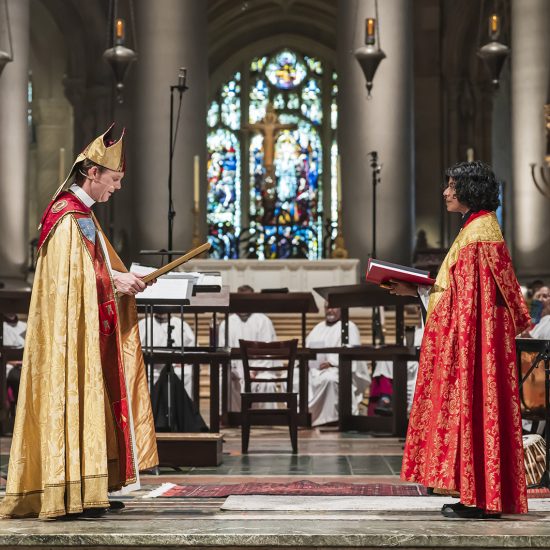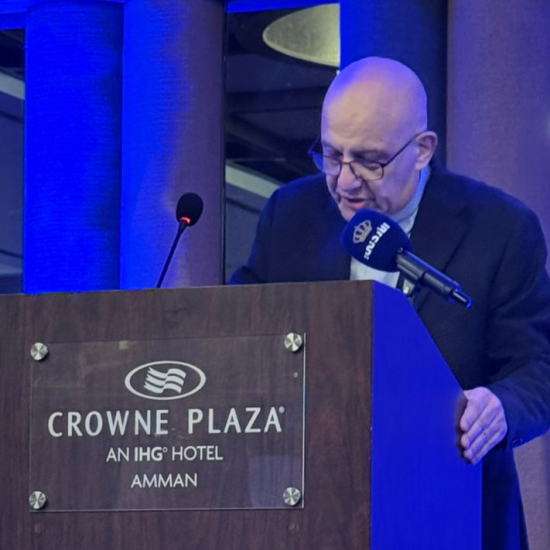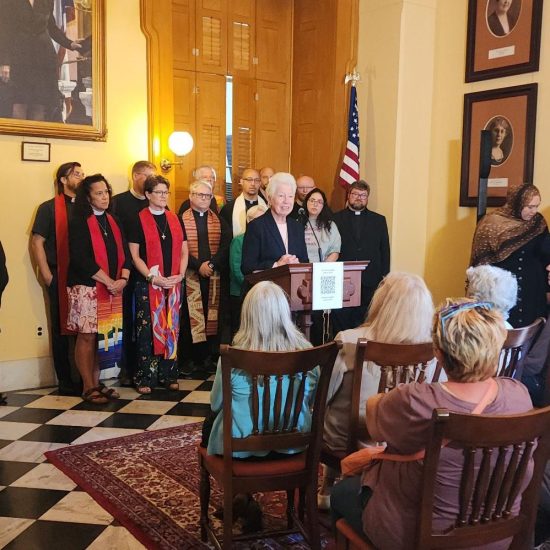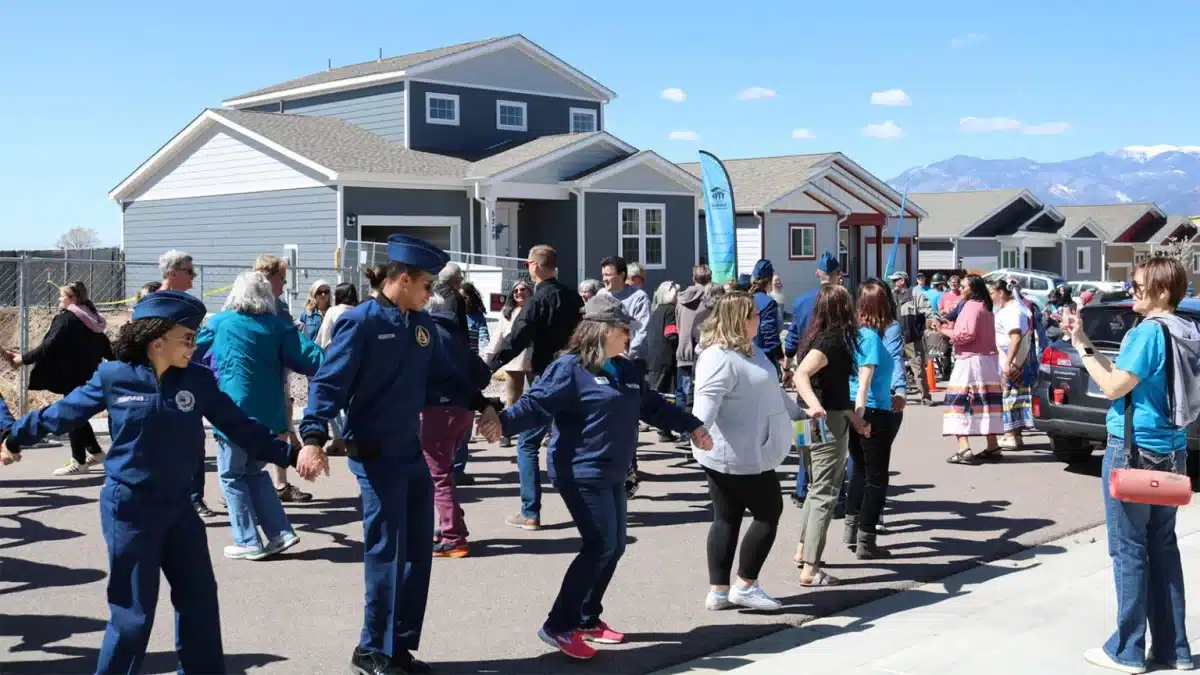
(RNS) — Habitat for Humanity was built on a pair of simple yet profound ideas.
Everyone deserves a decent place to live.
Anyone who wants to help make that happen is welcome to pick up a hammer and get to work.
For nearly five decades, those ideas — which Habitat’s founder referred to as the “theology of the hammer” — have helped Habitat grow from its humble beginnings at a Christian commune in Georgia into a worldwide housing nonprofit that’s helped more than 46 million people around the world find a place to call home.
Among those homes are 30 “Unity Build” houses in Nashville, Tennessee, built by an interfaith coalition of congregations over the past three decades. Those congregations believe very different things about God, said Kevin Roberts, a former pastor and director of faith relations and mission integration for Habitat for Humanity of Greater Nashville. But they share a common conviction about helping their neighbors.
That makes a Habitat build site a rare place where people who disagree can work together in polarized times. All they need is a willing pair of hands.
“When you step onto the Habitat build site and someone puts a paintbrush or a hammer or a saw in your hand, no one asks, ‘Who did you vote for?’” said Roberts. “No one asks, ‘Where did you go to church or did you go at all?’”
That inclusive approach has helped Habitat thrive despite the many challenges facing faith-based charities in the United States — including aging supporters in shrinking congregations, a loss of faith in organized religion, and the nation’s growing polarization.
Jonathan Reckford, CEO of Habitat for Humanity International, said the nonprofit’s mission is to put God’s love in action by providing housing. To do that, he said, requires bringing a wide range of people together.
Using volunteers to help build a Habitat house is a social change strategy, said Reckford, one that invites people to care about affordable housing and about working with their neighbors. That’s an important task in today’s isolated and polarized times.
“My observation is that when people serve together, they focus on what they have in common,” Reckford said in a phone interview. “They focus on shared values — as opposed to when we sit by ourselves online. Then it’s all about how we are different.”
Reckford hopes to expand that kind of intentional bridge-building in the coming years through a new initiative called Team Up — a partnership of Habitat, Catholic Charities, the YMCA and Interfaith America. The initiative was first announced last fall at a White House summit.
The idea is to address the nation’s divisions by inviting people to build friendships as they serve together to meet community needs. For Habitat, that will likely involve more intentional community building on the worksite and an increased focus on interfaith cooperation.
Reckford said Habitat’s core Christian identity and its commitment to interfaith work go hand in hand. Faith in God is at Habitat’s center — but God is “not a border” to keep others out.
That deep faith, he said, allows Habitat to be “radically inclusive” and to welcome anyone who wants to lend a hand.
“We should not have to give up what has made Habitat successful in order to be joyfully welcoming of others,” he said.
Reckford suspects that community service will become increasingly important for churches and other faith groups in the future, as people become more skeptical of organized religion. Habitat, he said, was born in church basements and grew by tapping into the energy and faith of people who were already church members. Now many churches will have to reach out to people who aren’t part of their community to continue their ministry, he said.
“In our increasingly unchurched culture, community service is going to be the front door for more and more faith communities,” he said. “The first invitation might be ‘Come to serve with me’ rather than ‘Come worship with me.’”
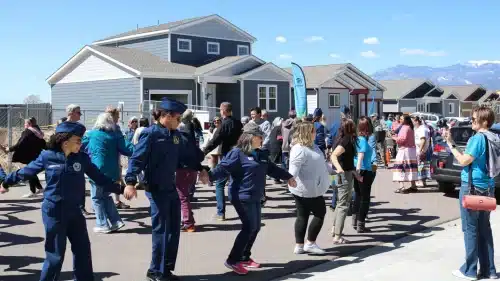
Attendees participate in a traditional round dance showcasing friendship, led by the Native American Women’s Association, during the dedication of a Pikes Peak Habitat for Humanity Interfaith Build for Unity home, rear left, on April 29, 2023, in Colorado Springs, Colorado. Photo courtesy of Pikes Peak Habitat for Humanity
Eboo Patel, president of Interfaith America, said his organization’s work was shaped in part by his experience working on an overseas Habitat for Humanity project in Hyderabad, India, in the early 2000s. Interfaith America — then known as Interfaith Youth Core — was just getting off the ground and Patel and others volunteered on a project in a city that had experienced religious violence.
And yet, on that project, Hindus, Muslims, and Christians worked side by side.
The experience left Patel convinced of the power of service as “a common table for interfaith conversations,” he said. As he looked further into Habitat’s history, he learned the group’s late founder, an Alabama lawyer named Millard Fuller, began the work in part so his Christian friends could get along.
“Millard Fuller’s original vision was: Hey, my evangelical and mainline friends can’t even talk about Jesus because it just leads to an argument,” Patel said. “But we can serve together.”
That ecumenical approach to working together naturally led to interfaith work, said Patel. The idea of helping your neighbors, he said, is common among many faiths. No matter what they believe about God, each faith has its own version of the theology of the hammer. There’s something “extra sacred” when people of different faiths work together for the benefit of others, according to Patel.
“Everyone has a story to share,” he said. “You’ve opened up what we called mutually enriching conversations between people of different faiths.”
This past weekend, Pikes Peak Habitat for Humanity, based in Colorado Springs, dedicated its second interfaith-build house, which brought together Christians, Jews, Muslims, and Buddhists, along with a Native American group.
“We try to pair two faith congregations together from different traditions so that they have the opportunity while on the construction site for the day to get to know one another,” said Chloe Henry, the Faith in Action program manager for Pikes Peak Habitat.
Pike’s Peat Habitat has also organized an interdenominational Christian house build as well as interfaith dialogue events where people can talk about how their faith inspires them to care about affordable housing. This past year’s interfaith event focused on the topics of increasing Black homeownership and on building a community where everyone belongs.
Nashville Habitat also has held interfaith dialogues as well as interfaith worship services — involving Jewish, Hindu, Muslim, and Christian clergy — at Congregation Ohabai Sholom, a Nashville synagogue better known as the Temple.
The Temple first became involved with Habitat when a past president of the synagogue wanted to get congregations involved in a social action project, said Rabbi Shana Mackler, who also serves as a senior scholar. The Unity Build began with three congregations and now involves nearly two dozen.
“We have stayed involved largely because people love direct action projects, and because it gives us the opportunity to connect with other houses of worship and religious communities in doing good, meaningful work,” she said.
For Lauren Brooks-Gregory, the interfaith service at the Temple is one of the most important aspects of the Unity Build. Brooks-Gregory, who is 40, said she first became involved in Habitat as a teenager and learned about the Unity Build through her Calvary United Methodist Church, where she grew up.
The church has long been a supporter of Habitat for Humanity of Greater Nashville, which has helped 1,000 families become homeowners.
She said the interfaith service sets the tone that everyone involved is committed to the same goal — putting a roof over a family’s head.
Brooks-Gregory took over as a volunteer coordinator for the Unity Build in 2022 and said she wants to build on the legacy of those who came before her. In her role, she works alongside the point people in each congregation — who are responsible for raising funds and finding volunteers. She said there’s room for congregations small and large to get involved.
She hopes the interfaith work of Habitat will become even more intentional in the future. A former youth pastor who now does training for an electrical contractor, Brooks-Gregory said strengthening relationships between people of different faiths takes intentional effort and planning — especially in trying times.
“The effort to get along is ever-changing,” she said. “It just looks different right now. But the struggle has always been there.”
Brooks-Gregory said she loves the way Habitat puts people in motion to get something constructive done, while they get to know each. That provides space for understanding, she said.
“Let’s practice interfaith dialogue. But also, hand me that two-by-four.”

